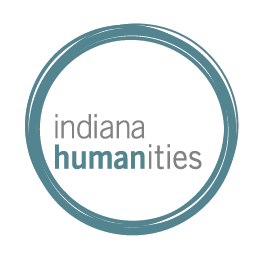On exhibit at the Atheneum October 2-November 14
Open Tuesday-Sunday 9:30 a.m.-5:00 p.m.
Historic New Harmony has been selected by Indiana Humanities to host a Smithsonian-curated traveling exhibit called Water/Ways as part of the Museum on Main Street program, which brings exhibitions and programs to rural communities. The exhibition, which dives into water—an essential component of life on our planet, environmentally, culturally and historically.
In societies across the globe, water serves as a source of peace and contemplation. Many faiths revere water as a sacred symbol. Authors and artists are inspired by the complex character of water – a substance that is seemingly soft and graceful that is yet a powerful and nearly unstoppable force.

Water also plays a practical role in American society. The availability of water affected settlement and migration patterns. Access to water and control of water resources have long been a central part of political and economic planning. Human creativity and resourcefulness provide new ways of protecting water resources and renewing respect for the natural environment.
Indiana's Wabash River
The Miami Tribe named it waapaahšiki siipiiwi, which means bright white river. The French called it Ouabache. Today it is known as the Wabash River. At over 500 miles long, the river has been used for trade, travel, discovery and most importantly, the center of this community. Now more than ever it is important to improve upstream conservation strategies to reduce nutrients and sediments that come from human activity, making the Wabash better for both people and wildlife. Learn more about the history of the Wabash River and current conservation efforts in this permanent wayside exhibit produced in partnership with The Nature Conservancy and the USGS Ohio-Kentucky-Indiana (OKI) Water Science Center. These waysides will be available to view on the Atheneum grounds starting October 2nd.
"Our state’s freshwater resources are a top priority for The Nature Conservancy, so we are excited to partner with Historic New Harmony on the Smithsonian’s traveling Water/Ways exhibit to showcase the importance of Indiana’s Wabash River. New Harmony’s unique history and location along our state’s official river make it a perfect place for Hoosiers to learn more about the precious resource of water and the daily actions we can each take to improve the Wabash for both people and nature." -Mike Dunn
Water/Ways has been made possible in Indiana by Indiana Humanities. Water/Ways is part of Museum on Main Street, a collaboration between the Smithsonian Institution and State Humanities Councils nationwide. Support for Museum on Main Street has been provided by the United States Congress. Water/Ways was adapted from an exhibition organized by the American Museum of Natural History, New York, and the Science Museum of Minnesota, St. Paul, in collaboration with Great Lakes Science Center, Cleveland; The Field Museum, Chicago; Instituto Sangari, Sao Paulo, Brazil; National Museum of Australia, Canberra; Royal Ontario Museum, Toronto, Canada; San Diego Natural History Museum; and Science Centre Singapore with PUB Singapore.

